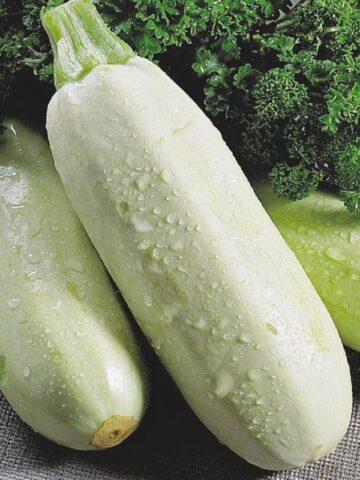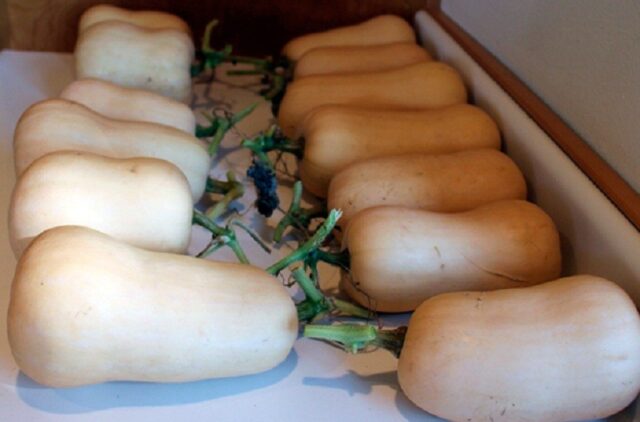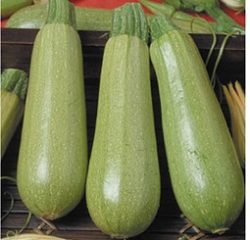Content
Zucchini is unpretentious, so even inexperienced gardeners can grow a good harvest. But ensuring its safety for at least several months is already more difficult, even if the varietal characteristics include good shelf life. Preliminary preparation of both the fruits themselves and the room allocated for them will be required. One of the most convenient options is to store zucchini in a cellar or basement in winter.
Is it possible to store zucchini in the cellar?
A cellar or basement is a place that is optimal for storing almost the entire crop during the winter. Zucchini and other plants from the Pumpkin family are no exception. But many varieties and hybrids initially do not have good shelf life, so special attention during preparation will have to be paid to both creating and maintaining an ideal or close to it microclimate, as well as disinfection, so that the zucchini does not suffer from pathogenic fungi during storage in the cellar.

The easiest way to create optimal conditions for storing zucchini is in the basement or cellar.
Zucchini varieties suitable for storage in the cellar
For many early ripening zucchini, good keeping quality is not typical, but this is not a general rule. Medium-late or late-ripening varieties and hybrids are best suited for long-term storage in a cellar in winter. They are characterized by a thick, even hard peel and small seeds.
Golden Cup
Early bush squash, with “massive” fruiting. At the same time, 5-6 fruits are formed on the bush, 15-20 cm long and weighing about 1 kg. The variety gets its name from its bright golden-yellow skin.

Golden Cup zucchini can last until February if you provide them with optimal conditions.
F1 Festival
A very original variety of zucchini, combining decorativeness and excellent taste. The fruits are medium-sized (0.6 kg), shaped like pumpkins with pronounced ribbing. The skin is pale green, with white, yellow, almost black stripes and spots scattered chaotically against this background. The pulp is bright orange, “pumpkin” in color.

Despite their exotic appearance, Festival zucchini is easy to care for and has good shelf life.
Gribovsky-37
An unpretentious variety of zucchini with excellent immunity, well known to gardeners for a long time. The plant is bushy, the harvest ripening period is mid-early. The fruits are 18-25 cm long, weighing 0.7-1.3 kg, with greenish-white skin.

Zucchini variety Gribovsky-37 is valued by gardeners for its good yield (up to 8 kg/m²)
Zebra
Early ripe zucchini. The bush is compact, weakly branched. The flowers are predominantly female. Productivity is very high - up to 15 kg/m². The fruits are 15-20 cm long and weigh 0.5-0.6 kg.The color of the skin is uneven dark green stripes and spots on a light background.

Zebra zucchini is suitable not only for long-term storage in the cellar, but also for cultivation in short, cool summer conditions
Nero di Milano
Early ripening, high-yielding zucchini, bred in Italy. The plant is bushy, the stems are thick, the leaves are large. The fruits are dark green, almost black; as they ripen, orange spots appear on the skin. Weight – within 0.9-1.5 kg.

In Russia, the ripening period for Nero di Milano zucchini varies greatly (35-60 days) and depends on the growing region
Negro
Early ripening variety. The bushes are compact, the leaves are small, the flowers are predominantly female. The fruit weighs about 1 kg, the skin is black-green, with small light “speckles”. Productivity – up to 10 kg/m².

Negritenok zucchini is resistant to fungal diseases
Preparing the Zucchini
Even zucchini, which according to their varietal characteristics are suitable for storage in the cellar in winter, will not last long if their preparation is neglected. There are several important nuances:
- Refusal to water about two weeks before harvesting zucchini. Otherwise, they will be “watery”, almost tasteless. Long-term storage of such specimens in a cellar is impossible.
- Choosing the right time to harvest. Zucchini that have been “snatched” by even slight frosts are absolutely not suitable for long-term storage in the cellar. Despite the conditions, they deteriorate within 10-15 days. A clear, dry day is best for harvesting zucchini.
- Cutting zucchini together with a stalk 5-8 cm long. This is a reliable “indicator” of the absence of “hidden” rot in the fruit - it begins to develop precisely from the “tail”.To avoid infection, zucchini intended for long-term storage in the cellar are cut with a sharp, disinfected knife or pruning shears.
- "Drying" in the fresh air. If the weather permits, zucchini that are planned to be stored in a cellar or basement are left in direct sunlight in a place with good ventilation for about a day. In such specimens, the skin still hardens, turning almost into “armor.” The texture of the pulp and its taste are better preserved.
- Minimizing mechanical damage during harvesting. Zucchini intended for storage in the cellar is removed and placed in containers so that the skin is not damaged. Even minor mechanical damage is a “gate” for infections. Under no circumstances should you throw them away.

A “frayed” sloppy cut, formed after unscrewing the fruit from the vine, sharply reduces its shelf life in the basement or cellar
For long-term storage in a basement or cellar, zucchini of the typical size for the variety or hybrid are best suited - neither large nor small. The degree of their ripeness is also important - both unripe and overripe specimens will not last long. The desired stage can be determined by gently tapping the fruit with your knuckles - a clear dull sound should be heard. Overripeness is indicated by the already drying stalk.
Before storing the zucchini in the cellar, they are inspected again, rejecting all fruits even with minimal mechanical damage to the skin, traces of mold, rot, other fungal infections, or those affected by insects. Specimens that have passed “quality control” are wiped with a dry soft cloth, removing soil particles and other debris.

After all the preparatory procedures, it is recommended to send the zucchini for storage in the basement or cellar as quickly as possible
How to keep zucchini fresh in the cellar for a long time
It will not be possible to store zucchini in the cellar for the winter if you do not ensure and maintain optimal temperature and humidity in advance. Fungal infections and even inappropriate “neighborhood” can be detrimental to the harvest.
Cellar disinfection
The cellar is prepared for harvest storage around mid-summer. First of all, it needs to be cleared of plant and other debris left over from last year’s planting. Then the walls and floor are carefully inspected to identify holes through which rodents can get into the cellar. All identified damage is repaired, the performance and quality of ventilation is checked.
Everything that can be taken out of the cellar is taken outside for washing and drying on a warm sunny day. Instead of ordinary water, it is advisable to use, for example, a bright pink solution of potassium permanganate.
During storage, zucchini often suffers from fungal infections, so the walls and ceiling must be whitened with a solution of slaked lime. The floor is covered with a fresh layer of sawdust, sand, and other material that absorbs excess moisture from the air.

For greater efficiency, copper sulfate or another fungicide is added to the whitewash lime to act as an antiseptic.
Another effective way to disinfect a cellar before storing zucchini is to fumigate it with a sulfur bomb.A small piece is burned indoors, sealing it as much as possible.

You can go inside the cellar no earlier than three days after the smoke treatment
Temperature and storage conditions
For storing zucchini in the cellar in winter, four indicators are critical:
- Temperature. The optimal range for storing zucchini in the cellar is 4-10 °C. They will not tolerate even short-term exposure to negative temperatures; frozen zucchini becomes unsuitable for food. If the cellar is too warm, the seeds begin to sprout inside the zucchini, they are almost completely deprived of their benefits and taste, and the pulp becomes “cotton.”
- Air humidity. Long-term storage of zucchini in the cellar in winter is possible only with an indicator of 80-85%. At low humidity, the pulp of zucchini stored in the cellar, despite the presence of a strong skin, quickly becomes flabby and tasteless. When it rises higher, the development of mold and rot is almost inevitable.
- Lack of light. This helps to “slow down” the process of “breathing” of zucchini, which inevitably releases moisture into the air.
- Availability of high-quality ventilation. Without it, it is impossible to maintain the required air humidity; condensation accumulates on the walls, turning into a favorable environment for the development of pathogens. But you need to take into account that good ventilation eliminates drafts.

To control temperature and humidity in a cellar or basement, it is recommended to acquire special devices in advance
What vegetables can be stored with?
The “neighborhood” of zucchini in the cellar with other crops can significantly increase or shorten the shelf life. Suitable “companions” for them will be other pumpkins (pumpkins, squash, cucumbers) and bell peppers. There are many more “undesirable” neighbors:
- onions, garlic, potatoes, other vegetables and root vegetables with a pronounced aroma;
- all types of cabbage;
- tomatoes, apples, pears.

Zucchini and other squash have similar requirements for storage conditions.
What is the best way to store it?
Any breathable container is suitable for storing zucchini in a cellar or basement - cardboard boxes, mesh plastic or wooden boxes. A layer of sawdust, sand, wood shavings, and other material capable of absorbing excess moisture is poured onto the bottom. They also add zucchini if there are a lot of them and you have to stack them in two or more layers.
If there are not enough containers for storage in the cellar, the zucchini is laid out on wooden shelves of racks (middle or upper), on a “cushion” of straw, hay or pine needles. To prevent them from falling apart, they can be packed in nets or clean potato bags. Plastic bags that do not allow air to pass through are strictly not suitable for storing zucchini. When placing fruits on a rack, you need to make sure that they are away from the ventilation holes - the entry of cold air sharply reduces the shelf life.

It is undesirable for the fruits to come into contact with each other
If there is an acute shortage of space in the cellar, zucchini can be hung from the ceiling on hooks by pre-stretching ropes or wire.They are laid out in 2-3 pieces (preferably one at a time) in vegetable nets, linen or gauze bags, old tights.
How long can zucchini be stored in the cellar?
How long fresh zucchini is stored in a cellar or basement directly depends on the variety. Minimal shelf life (8-10 weeks) is typical for early varieties. It can be extended, but only slightly (12-15 days), by moving the timing of planting seeds or seedlings of zucchini into the garden bed by 4-6 weeks in advance compared to those recommended for the crop.
Mid-late and late-ripening varieties and hybrids of zucchini, usually called “winter”, will last in the cellar at least until the New Year or even until the beginning of next spring without losing their “consumer properties.” The approximate shelf life of mid-season varieties is 3.5-5 months.
Zucchini squash has the best shelf life. Last year's harvest, if provided with optimal storage conditions, will last until the end of next spring without any problems. “Experimentally” you can even select varieties that can “wait” in the cellar for the next harvest.

Keeping quality varies greatly among different types and varieties of zucchini.
Conclusion
In order to store zucchini in a cellar or basement without losing their beneficial properties, taste and general presentation throughout the winter, it is necessary, first of all, to wisely choose the variety for growing. But even good shelf life is not a determining factor - it is necessary to reject specimens that are not suitable for storage and prepare the cellar itself.








